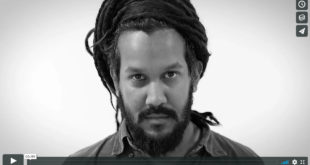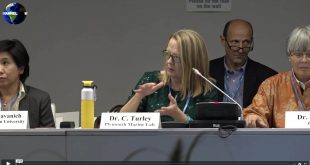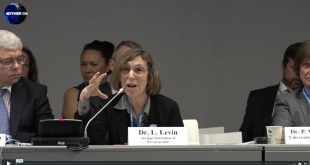Severn spoke directly to the delegates at Rio. A few of them sat up and took notice but how long did it affect their conscience? More important did it affect their government’s actions? No.
If I spoke before the delegates today I would feel the same fear and anger that she expressed and more, because I see the hypocrisy of our governments, of our leaders. In truth, for all their posturing, they have accomplished painfully little to avert the onset of catastrophic climate change.Money has been shown to be more important than their children’s future. I am afraid and I am angry at the problems that greedy and foolish adults have created, but just as Severn said: in my anger I am NOT blind. And in my fear I am not afraid to tell them all diplomats, negotiators, leaders of government banks and businesses, how I feel.
Adults you say you love us, but I challenge you to make your actions reflect your words without hesitation, without consideration of profit. Instead caring about what is most important: the lives of your children. If you continue to pursue selfish aims the results will be enormous suffering by your children.
And no amount of money will save even the wealthiest of children. Because money is at it’s root a fiction, and it will disappear rapidly in the world that you are leading us toward. I hope that you are listening and I thank you for letting these words into your heart.
However, I must also say that we young people must not rely on only the hopes that you might be listening. Young people are people and we have rights and we must fight for them.
Along with 20 other young people and my grandfather, I am a plaintiff in a lawsuit filed by our children’s trust against President Trump and the United States government for violating our constitutional rights to life, liberty and property. We still live in a nation of laws and I believe that our courts will find in our favor and require a government to develop and carry out a plan to reduce fossil fuel emissions.
But will it be too late? And there is such a thing as being too late. I encourage more young people to stand up for their rights. Just a few days ago this group in Minnesota was granted intervener status as they fought to stop a new tar sands pipeline. These young people are standing up to fight on their own without money and without a lawyer. Meanwhile what are adults doing? Making money. Developing the dirtiest carbon on earth tar sands tar shale and hydro fracking. Leaving a mess for young people to clean up. And they even leave us the tab: a trillion dollars here and a trillion dollars there. Where can we find it?
We must fight for our rights now, before it is too late. Thank you for listening and supporting us.
Stuart Scott : “We can open it up to questions now, if there any questions. Thank You “
Marlowe Hood with Agence France-Presse: “Sophie, a question for you. I wonder if you could tell us a little bit more about your lawsuit, the basis of it? And what the status of it is right now?”
“Sure. This lawsuit is filed in 2015 against the federal government by an organization called our Children’s Trust, which is based in Oregon. What makes our case different from other environmental lawsuits, is our very strong constitutional basis. We talk about the concept of public trust, in the public trust doctrine, but we really have a strong tie to our Constitution.. saying that we are fighting for our right to life liberty and property, fifth Amendment rights. And so it’s very unprecedented as the judges in Eugene have said so far and it’s looking really great. The process is very slow, but it’s the best we can do.
Dr Hansen: “Yeah, we should say the Trump government has tried to slow this suit down by asking the Court of Appeals to intervene. And it is now being delayed because of that, but I think that will not last much more than a few weeks longer. But instead of the trial being in February, it may be delayed a few months because of that.
Alex Wyte him from the Thomson Reuters Foundation:“Could you tell me what you hope to achieve through the lawsuit?”
Sophie: “The main goal is to put pressure on the government. To have them realise that young people notice that they’re not doing their jobs and we’re not going to be quiet about it. No civil rights suit or civil rights issue in history has ever been solved without the pressure of the public behind it, so that’s the main goal. To show the government that that pressure is there. And then, once the lawsuit is successful the goal would be to have the government have to enforce an effective plan to reduce emissions at a at a safe level and then the courts would have to, unlike the Kyoto Protocol or our RCP two-point-six the courts would have to check back in with them and make sure that they’re committing.
Dr Hansen: ‘Yeah, the suit asked for the government to have a plan to reduce emissions at a rate that the science has specified. Which would, if followed globally, and if you extract co2 via improved agricultural and forestry practices to the tune of at the time we began the first lawsuit it required a hundred Giga tons extraction from the air. Well now, if you want to get back to three hundred and fifty parts per million by the end of this century, you would actually have to extract 150 instead of 100 Giga tons. So, it’s a very ambitious target to get back to what is estimated to be a safe level of atmospheric carbon dioxide.
It’s an ambitious target, but that’s what the science tells us. And that’s what’s been ignored by the governments around the world. They just pretend that well, if we’re doing some things… That move in the right direction…. that maybe will solve the problem, but as we show it on our first slides: the emissions just keep going up.
If you’re going to solve the problem you actually have to get the emissions to go down. The courts cannot define a solution, but they can they can require the other branches of the government to report back that they’re doing their job. My expectation is that the only way you will actually solve that is by putting a price on carbon. Because otherwise limited actions simply don’t amount to that much.
Stuart Scott: “There’s also a value in this trial in that other countries, young people in other countries, may follow suit. It’s hoped that that they will follow suit. We’re actually here to try to help lead that way to help break that ice a little bit. And there’s actually I believe a precedent in the Netherlands of the government, having been found doing an insufficient amount about climate change. So of course if we’re successful in the United States, it will be a very powerful message internationally.
Judy Sole, Cape Town TV and Mother Channel internet television: ‘We had a report last year that the increasing heat has led to such a large war of water on the surface that the phytoplankton are dying and that at the present level of depletion of oxygen, because they’re not functioning properly their world would the sea would be unable to support life at the year 2030. Which brings the whole thing really much faster fort so that’s a 20 30 year peer reviewed study and I just wondered if there isn’t anything that you could use from such a such a study to put even more pressure even on judges.. who otherwise are going to take a long time wasting time when you haven’t got time we’ve got to be take action right now.
Stuart Scott: Judy, since that’s an offer of more data if you’d send that to me I’ll share it with dr. Hansen and Sophia
“Yeah, they’re of course many climate impacts that are already occurring and can be attributed to climate change, so the evidence is there. And our executive and legislative branches of the government have just failed to substantially respond to that. That’s why we’re trying to bring the courts into it, as the one branch of government that is less sensitive to fossil fuel money. Because it’s very clear that fossil fuel money is having a huge impact on on our government’s, not just in the United States, but clearly in the United States and as well as many other countries. So I think we have to get have to bring the judiciary in to this as he said, not only in the United States, but in other countries.
Stuart Scott: We have time for one more short question.
Andres Freitas from the Dominican Republic: It seems to me that the price on carbon seems to be the most pragmatic solution. To bring the real price on carbon, so that it will have a real effect. But should we be talking about taxing carbon? Shouldn’t we be talking first about subsidies that fossil fuel companies received? I believe it IMF recorded it at 5.3 trillion in 2015.
 Mother Channel Environmental, climate change news and media.
Mother Channel Environmental, climate change news and media.



